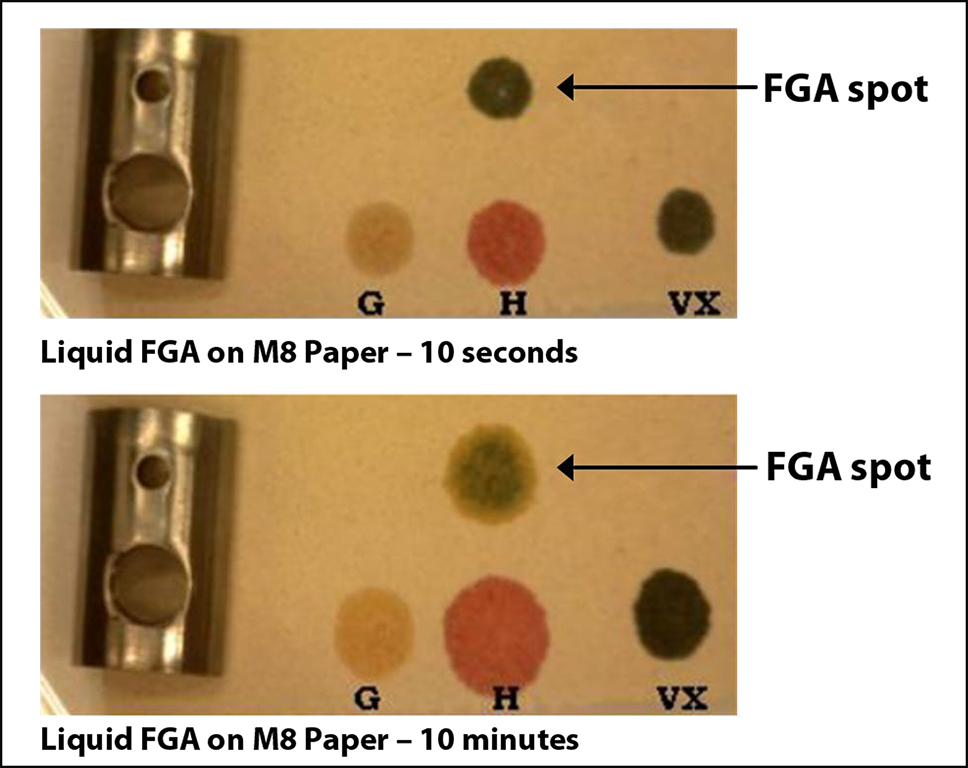A couple drives from their home to a local restaurant for lunch. After eating lunch, the couple visits a bar and then strolls through a local park. Shortly afterward, the police are called to the area because the couple is found unresponsive on a park bench. The police and medical personnel respond to the scene and treat the incident as an opioid overdose. Narcan is administered to the couple, and they are transported to a local hospital.
Hospital personnel treat the couple for an opioid overdose. The patients do not respond well to the opioid overdose treatment, so the clinicians contact the Regional Poison Center in search of other plausible answers to the symptoms. Based on their symptoms, the poison center thinks their condition is possibly due to an adulterated street drug or a pesticide poisoning. They begin treatment with atropine and pralidoxime for a suspected pesticide or nerve agent poisoning and it is later confirmed by a specialized blood test to be a nerve agent poisoning. Over many days of treatment the patients slowly begin to respond.
Local law enforcement is notified that a nerve agent may have been used and that a terrorist attack or attempted murder has occurred. State and federal authorities are notified and mobilized to the scene as per Section 4.2.1 (Crisis Management). The state Emergency Operations Center activates the National Guard Civil Support Team (WMD-CST) to conduct sampling and field-confirmatory nerve agent analysis to include FGAs. Law enforcement, including the FBI, begins to retrace the couple’s steps and identify five different locations where the poisonings may have occurred – their home, car, the restaurant, the bar, and the park. Officers deploy to each of these locations to secure the scene, protect the public and begin investigation.
During this time, a local law enforcement officer who initially responded to the couple’s home falls seriously ill. The officer was accidentally exposed to the nerve agent during the initial investigation. It was determined that the couple’s home was the likely site of their initial exposure. The FBI Hazardous Evidence Response Team obtains a result on M8 paper employed in the home that suggests nerve agent contamination. The M8 test spot is yellow/green and shifted to a more yellow color after about 10 minutes. The shift of color after this short period indicates the possibility of an FGA. Figure 9 illustrates the appearance of a positive FGA result.

During the residence sampling, the FBI detects a possible nerve agent in a perfume bottle inside the house. It is collected as evidence and sent to the FBI’s laboratory for analysis. Later, the FBI laboratory confirms that the perfume bottle contained an FGA.
After the FBI completes its investigation, the cleanup will start under UC with the EPA, potential UC participation, state, local officials, and other stakeholders. National Response Team has been informed and is activated to assist RRT and the designated Federal On-Scene Coordinator (FOSC) in managing this incident. As the response shifts into Phases 2a-c, (Section 4.2.2), a Technical Working Group (TWG) with experts from multiple agencies is convened under UC to discuss sampling strategies and clearance decision criteria. The UC convened an Environmental Clearance Committee (ECC), who complete a site- specific risk assessment to derive the site cleanup goals.
Currently, the U.S. government has not published occupational exposure limits or general population cleanup goals for FGAs. FGAs also have no established Permissible Exposure Limits or Acute Exposure Guideline Levels. The EPA worked with the U.S. Army Chemical Biological Application and Risk Reduction during preparedness efforts to obtain any toxicology information that the Army held. According to one study, a variant of FGA has intravenous and percutaneous toxicity that exceeds VX's toxicity by a factor of 1 to 8.139 Based on this study, toxicologists recommend acute and chronic exposure action levels for the site cleanup. Extreme precautions must be taken to prevent exposure due to the highly toxic nature of the agent.


